Crucial MX200 (250GB, 500GB & 1TB) SSD Review
by Kristian Vättö on May 22, 2015 8:00 AM EST- Posted in
- Storage
- SSDs
- Crucial
- MX200
- Micron 16nm
Mixed Random Read/Write Performance
For full details of how we conduct our Iometer tests, please refer to this article.
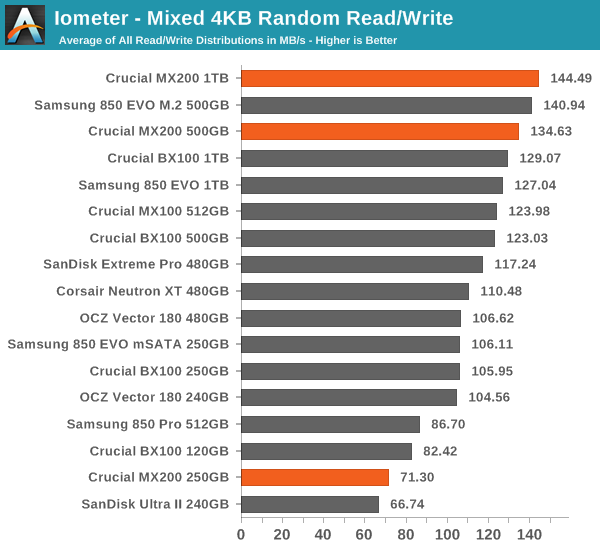
Mixed random performance is great and received a nice upgrade from the MX100. The 250GB version doesn't do that well, but note that our mixed testing is conducted on a full drive, so the SLC cache can't do its magic.
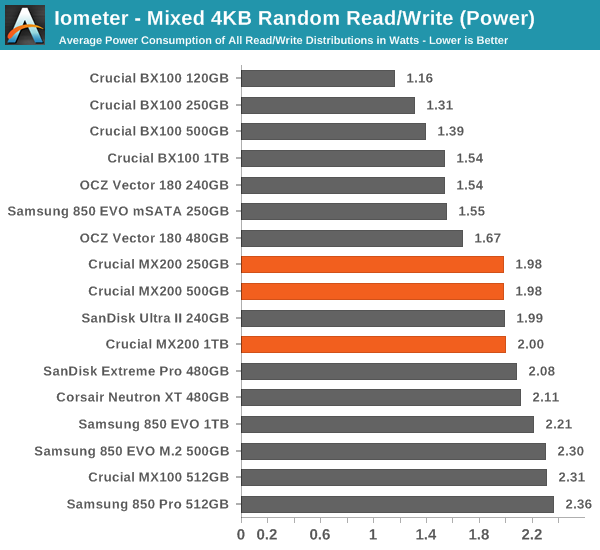
Power consumption is relatively low given the performance, resulting in good efficiency.
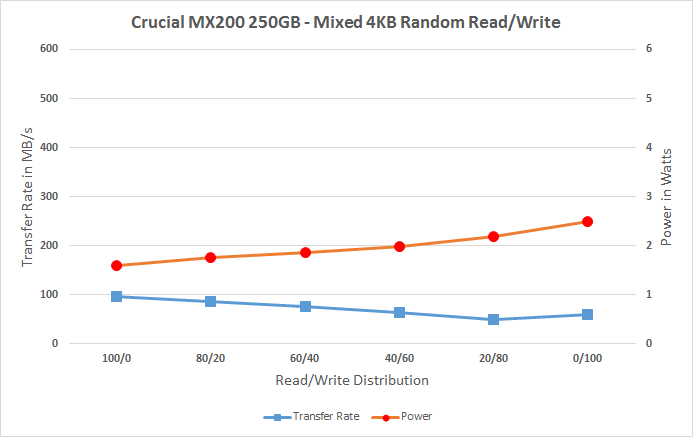 |
|||||||||
The performance of the 250GB SKU drops as more writes are thrown into the mix. That's not surprising given that the drive is full, so the drive needs to transfer data from SLC to MLC inflight, which reduces overall performance. The higher capacities without the SLC cache perform very well, though, and the performance scales nicely as the portion of writes increases.
Mixed Sequential Read/Write Performance

Mixed sequential performance isn't as good, but is still pretty decent when excluding the 250GB MX200.
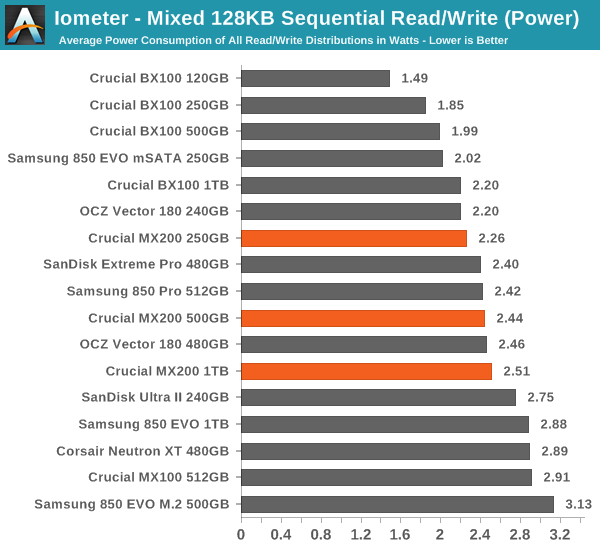
Power consumption is average too.
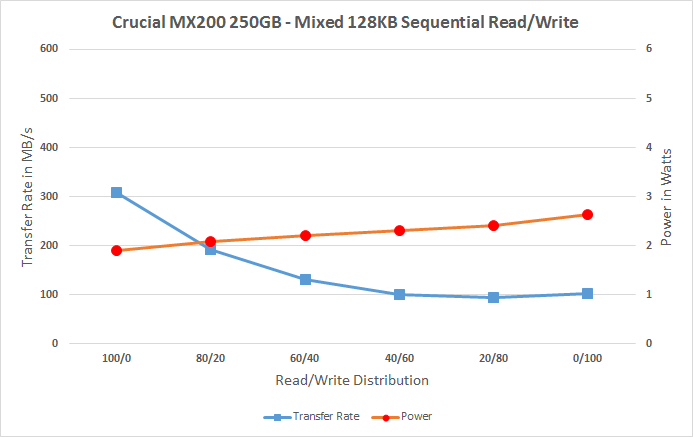 |
|||||||||
Again, as the drive is full, the 250GB just slows down with more write IOs. The higher capacities actually have a fairly even curve that isn't similar to the full-fledged bathtub curve that many drives have. It looks like Crucial has made an effort to improve mixed performance, which is always great news because it's an area where most drives are quite bad at.










62 Comments
View All Comments
KAlmquist - Saturday, May 23, 2015 - link
Take another look at Anandtech Bench. At the 500GB capacity, the mx100 beats the m550 by a small amount across the board. Dropping down to the 250GB capacity affects the write speed of the mx100 more than the write speed of the m550, so the m550 outperforms the mx100 on some benchmarks, but not by a lot. The bottom line is that the m550 and mx100 are close enough in performance that I doubt you would notice any difference in real life usage.petar_b - Sunday, September 4, 2016 - link
I wish I know the answer to that question. I use plenty of M500 and M500, and I really miss them. I don't know if SanDisk could be decent alternative to M550, I don't know how additional features compare to each other (power loss, power management, etc etc). Is there any comprehensive comparison between Micron and SanDisk ??Devo2007 - Friday, May 22, 2015 - link
Small typo on page 3. Under the Destroyer (Data Rate) graph, it says the following:Despite the improved IO consistency, the MX200 doesn't have any advantage over the MX200 in our heaviest The Destroyer trace."
I'm not sure if you meant MX100 or BX100 the second time
XZerg - Friday, May 22, 2015 - link
same on the page 10 under the power consumption chart:but at ~60mW the MX200 enjoys a small benefit over the MX200
Ryan Smith - Friday, May 22, 2015 - link
Thanks. Fixed.Essence_of_War - Friday, May 22, 2015 - link
Yikes, not at all impressed with the DWA in the benchmark workloads! It seems like DWA is a highly dubious feature for a price mark-up over the BX series. At the right price point the larger capacity MX200 w/o DWA (500 and 1TB) still seem like excellent buys, they're just competing super-hard with their BX brethren.olafgarten - Friday, May 22, 2015 - link
I'm still waiting to see what SanDisk does this year.romrunning - Friday, May 22, 2015 - link
Thanks for the good review, Kristian. I liked the call-out on the continued lack of full power-loss protection, and I really liked the constructive criticism in your final words.Shadowmaster625 - Friday, May 22, 2015 - link
why would they even release a product with an slc cache when the slc cache clearly does absolutely nothing?hulu - Friday, May 22, 2015 - link
I'm sure the cache does *something* - mostly when you don't write large amounts of data for minutes on end.The problem with MX200 256GB's implementation is that Crucial is using too much of pseudo-SLC (all the space there is) and the drive ends up driving itself against the wall when the drive fills up. The drive still needs to keep up with the continuing drive writes and at the same time move existing data from SLC to MLC.